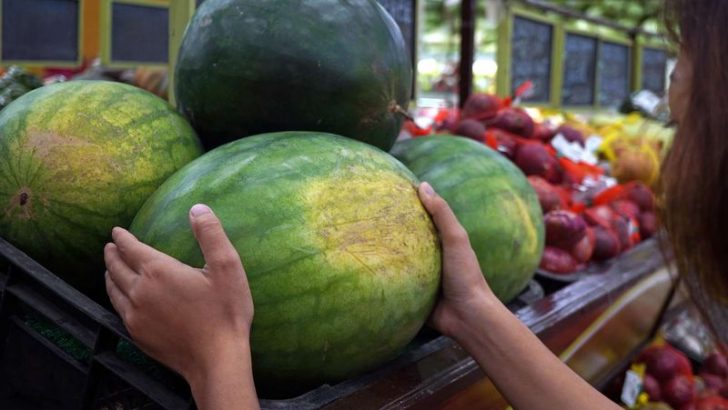Choosing the perfect watermelon can feel like a daunting task when faced with a sea of green melons. Fear not, as these seven secrets will guide you to selecting the juiciest and most delicious watermelon every time. From understanding the ideal sound of a ripe melon to recognizing the subtle visual cues, these tips will transform your watermelon-picking skills. Whether you’re preparing for a summer picnic or just want to enjoy a refreshing snack, mastering these secrets will ensure your watermelon is always a winner.
1. The Sound Test
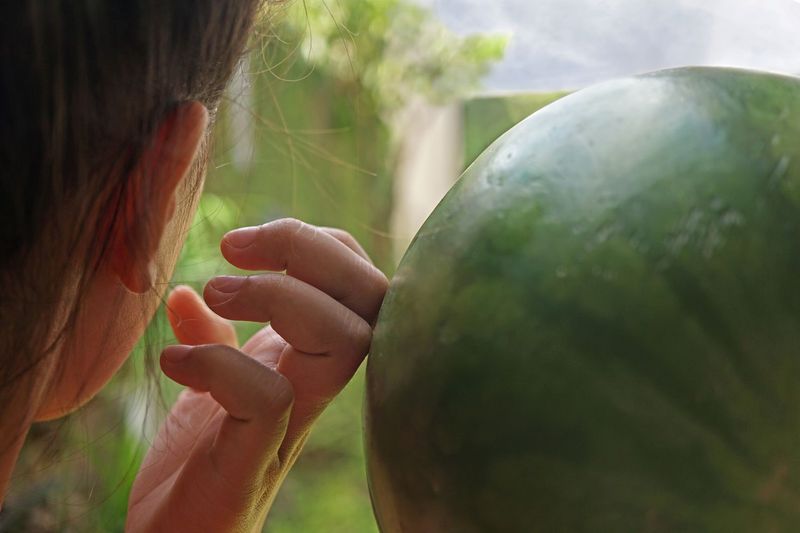
Ever wondered what a ripe watermelon sounds like? Tap it and listen for a deep, hollow sound. This indicates that the watermelon is full of water and ready to eat. If the sound is dull, it might not be as juicy inside. Imagine your watermelon echoing like a drum, signaling it’s packed with deliciousness.
This method has been used for generations, allowing farmers to gauge ripeness without cutting open the fruit. Use this trick next time you’re in the market, and impress your friends with your newfound expertise. Your taste buds will thank you!
2. Spot the Field Patch
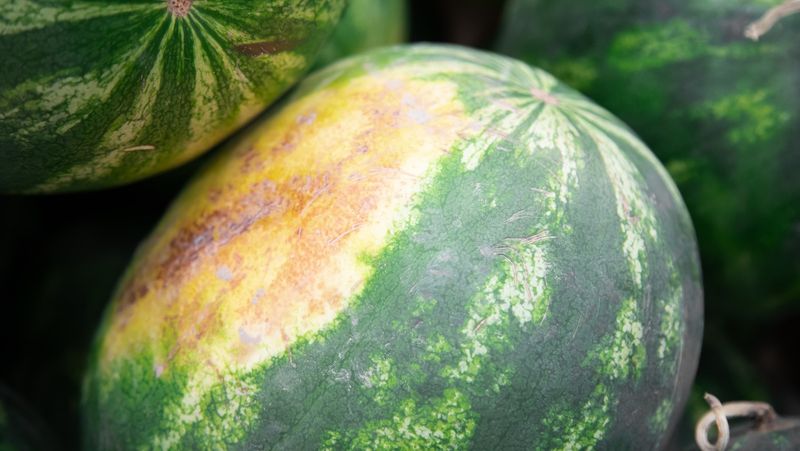
Have you ever noticed the spot where a watermelon rested on the ground? This is called the field spot, and its color can tell you a lot. A creamy yellow field patch means the watermelon has ripened under the sun, promising sweetness.
In contrast, a white spot may suggest that the fruit was picked too early. Farmers often rely on this visible clue to ensure the fruit has reached peak flavor. Checking the field spot is an easy yet effective way to choose a delicious watermelon at your local store.
3. Check the Shape
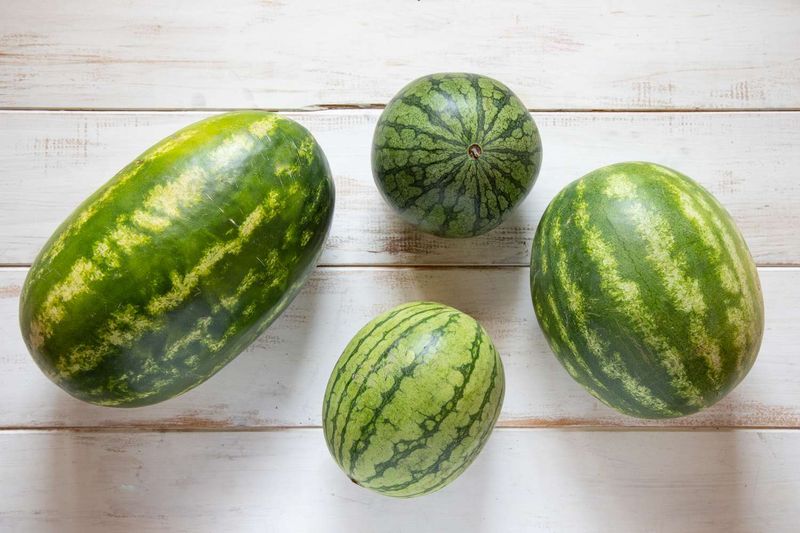
Watermelons come in various shapes, but the round ones are generally sweeter. Oval or elongated watermelons might be more watery and less flavorful. Picture a perfectly spherical watermelon sitting on a picnic table, enticing you with its promise of sweetness.
The shape is a simple factor that often goes unnoticed, yet it can significantly affect the taste. Next time you shop, consider the shape and discover how a round melon might just be the key to a juicier snack. Even the shape can hold secrets to a better taste experience!
4. Examine the Rind
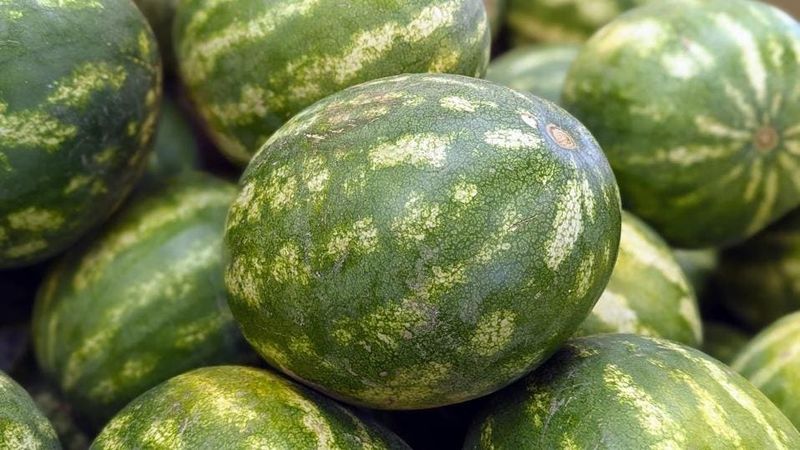
The rind of a watermelon holds clues to its ripeness. Look for a firm and slightly dull skin. Shiny watermelons might still need more time to ripen. Imagine tracing your fingers over its surface, feeling the firmness that promises a delightful taste.
Small cracks or webbing on the surface can also indicate sweetness, as it suggests natural sugars are pushing through. The rind is more than just a tough exterior; it’s a window into the juicy goodness inside. Next time, let your fingers guide you to the perfect pick!
5. Weight Matters
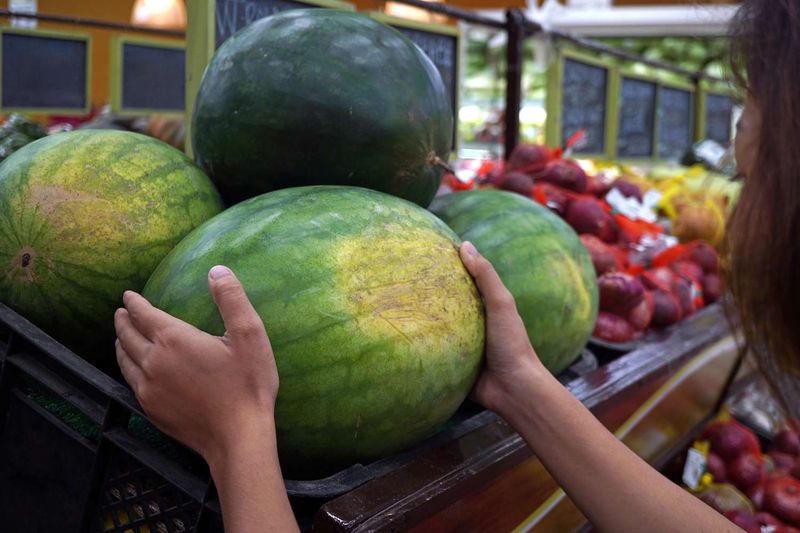
Ever lifted two watermelons of the same size but felt a difference in weight? The heavier one is likely packed with more water, translating to juiciness. This trick is simple yet effective.
Lifting several melons might draw some curious looks, but those glances will turn to envy when you find the juiciest one. Weight is a classic indicator of a ripe watermelon for both novices and experts alike. Next time, don’t shy away from picking and weighing; your juicy prize awaits!
6. Look for Uniform Color
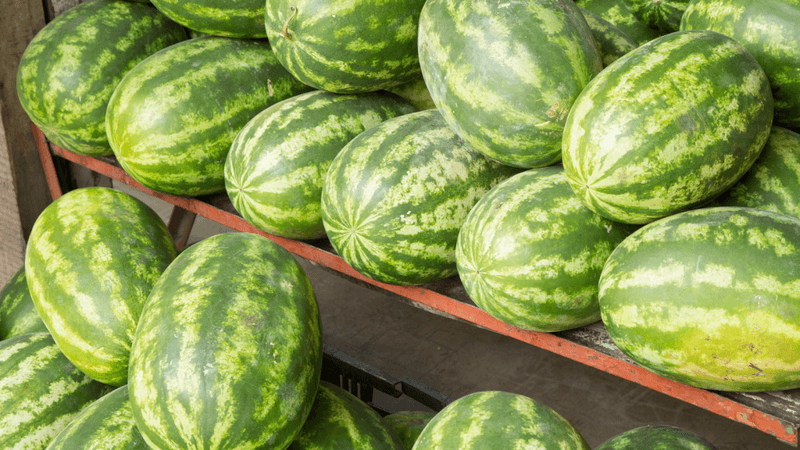
A uniform color across a watermelon indicates even ripening. Avoid watermelons with blotchy or inconsistent coloring. Visualize a melon basking in the sun, its green surface evenly colored, promising a sweet delight.
This consistency in color is a sign that the watermelon has ripened uniformly, ensuring each bite is as tasty as the last. A visual check is all it takes to glimpse the quality hidden beneath the rind. Keep this secret in mind for your next purchase, and enjoy the consistent flavor.
7. Stalk Evaluation
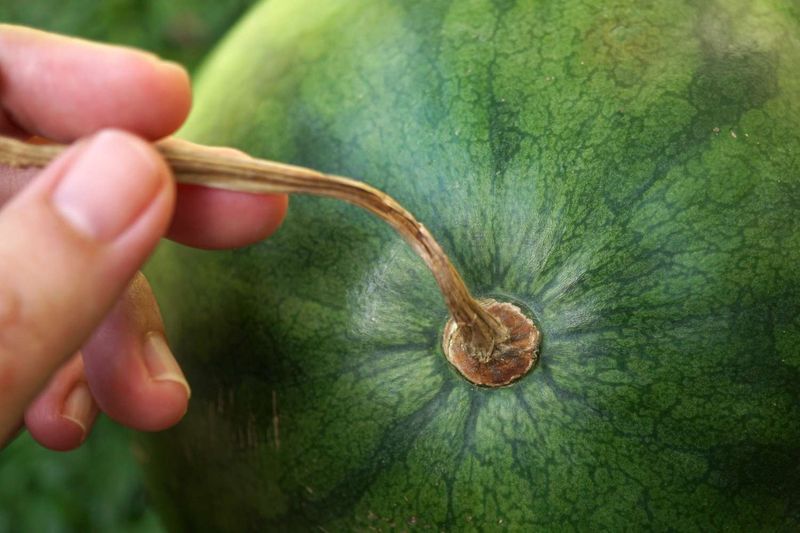
A dried and brown stalk can be a sign of ripeness. This often overlooked detail can make all the difference. Imagine inspecting the stalk, its brown hue confirming the fruit’s readiness.
If the stalk is green, it might have been picked too early. Farmers have long relied on this small but significant feature to predict ripeness. Next time you’re selecting a watermelon, give a moment to check the stalk, and you might just uncover a hidden gem.
Hi all, I am Sidney, an accountant, a hobbyist photographer, and a mother to two sweet girls who are my motivation. I love sharing the tips and tricks I gained all these years I’ve been a mother. I hope it will help you!

